Beaches Link: 2920 more daily construction vehicle movements on our roads
Residents fear the impact of construction works for the proposed Beaches Link tunnel with data showing up to 2920 extra daily vehicle movements on our roads.
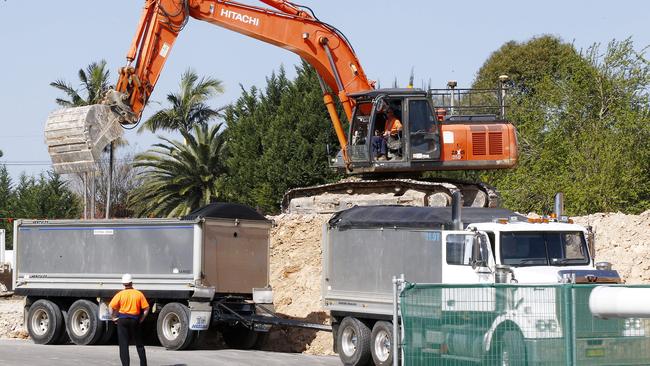
Manly
Don't miss out on the headlines from Manly. Followed categories will be added to My News.
More than 2900 truck and car journeys, linked to construction work for the controversial underground Beaches Link tunnel, would be added to roads each day on the northern beaches if the project gets the green light.
And an analysis of NSW Government documents by the Manly Daily has found that of those 2920 daily journeys, up to 890 would be made by large “heavy vehicles”.
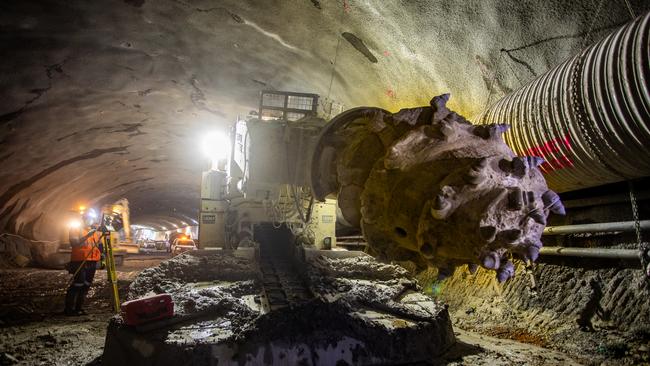
The trucks would be used to support construction works for the proposed twin-tunnel toll road stretching from the Warringah and Gore Hill freeways at Cammeray and Artarmon to Seaforth and Balgowlah.
A Transport for NSW (TfNSW) report into traffic and transport for Beaches and the Gore Hill
freeway connection said the large trucks would be used to dispose of soil from tunnelling works.
Trucks would also be on the move delivering materials to construction support sites at Balgowlah, Frenchs Forest and Seaforth. There would also be a number of journeys by construction personnel arriving and departing work.
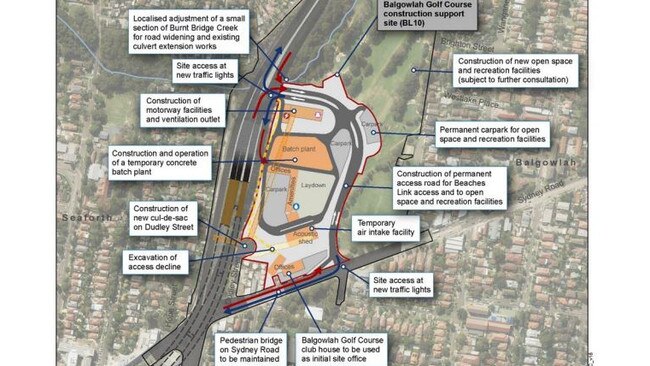
If the tunnels get the go-ahead, work would likely start in 2023. Construction would last up to six years.
The report said that movement of construction vehicles would also cause a small increase to peak hour queues at major intersections including the junction of Burnt Bridge Creek Deviation, Sydney Rd and Manly Rd at Balgowlah.
There would be also be slightly longer queues at the intersection of Wakehurst Parkway and Warringah Rd.
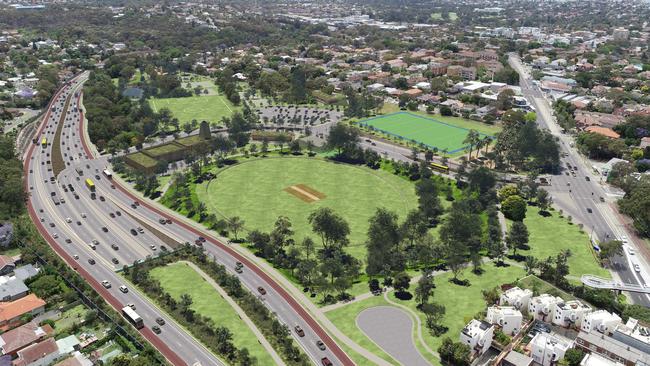
The TfNSW traffic report, part of the recently released environmental impact statement, showed that up to 2920 vehicle movements, linked to construction, are projected on roads each day for the Beaches Link project.
In the area around the two construction sites at Balgowlah — where the golf course is now and on Kitchener St — 1765 daily construction vehicle movements were predicted.
At the three sites along the Wakehurst Parkway — two near Kirkwood and Judith streets at Seaforth and one at the intersection of Warringah Rd and Wakehurst Parkway — 1155 vehicle movements would be made each day.
There will also be 450 vehicle movements per day at a concrete plant just south of the Spit Bridge.
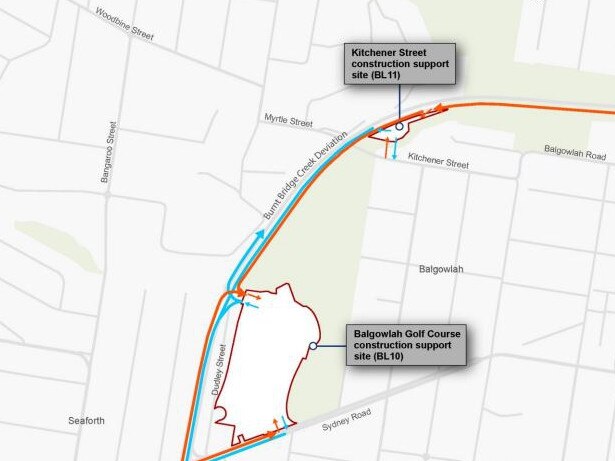
Critics of Beaches Link said the truck movements would badly affect the lives of residents and negatively impact Balgowlah Boys High School.
The Balgowlah Residents Group said it was “devastated that residents will be forced to live with such a large number of trucks and construction vehicles, as well as the noise and vibrations from actual construction”.
“Other transport projects in Sydney have dive sites located in industrial or commercial locations, not in the middle of residential areas,” spokeswoman Nerissa Levy said.
Ms Levy calculated that with more than 1700 vehicles per day around Balgowlah alone, it equated to about 2.5 vehicles a minute “with more vehicles concentrated in morning and evening peaks, for 5 years of construction”.
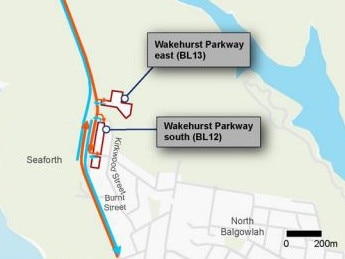
“Large trucks removing spoil will need to chug up the hill to the Seaforth/Manly Rd junction, pushing out even more diesel exhaust under heavy load. These vehicles will bring dust, noise and increased levels of toxic diesel exhaust on local roads and into people’s homes.”
Ms Levy said Balgowlah Boys High School, which overlooks the golf course tunnel dive site, would be hit with increased noise and pollution, as well as the dangers of increased traffic.”
A Transport for NSW spokesman said that north of The Spit Bridge, no local roads were proposed to be used as truck access routes while Beaches Link is being built.
“Heavy vehicles will use major arterial roads such as Burnt Bridge Creek Deviation, Sydney Rd and Spit Rd,” the spokesman said.
“At the peak of construction this is only expected to result in minor changes to traffic volumes, such as an increase of around 2.5 per cent at Balgowlah.
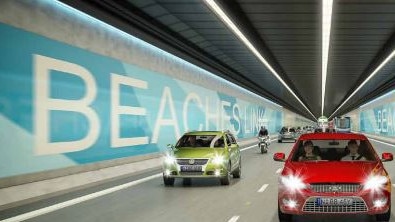
“Importantly, when complete the project will slash travel times for drivers and public transport commuters.
The plans include staging our work and traffic management to avoid peak periods, working with other projects and government agencies, ensuring pedestrian and cyclist safety and continuing to work with local residents.”



